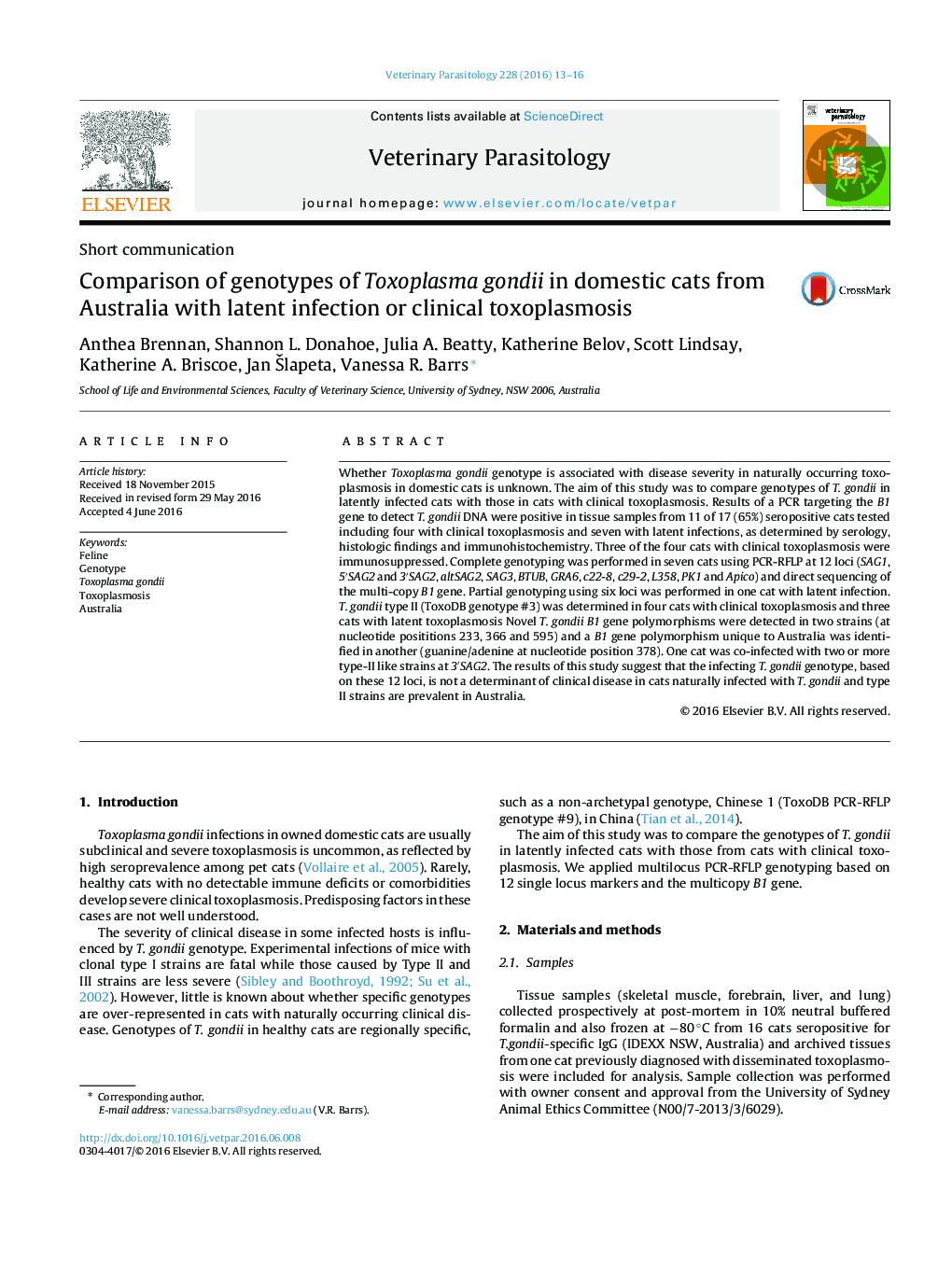| کد مقاله | کد نشریه | سال انتشار | مقاله انگلیسی | نسخه تمام متن |
|---|---|---|---|---|
| 5801976 | 1555648 | 2016 | 4 صفحه PDF | دانلود رایگان |
- T. gondii genotypes were compared in cats with latent infection or clinical disease.
- All cats were infected with Type II strains.
- ToxoDB genotype #3 was identified in 7 of 8 cats.
- Three of four cats with toxoplasmosis were immunosuppressed.
- T. gondii genotype was not a major determinant of clinical disease.
Whether Toxoplasma gondii genotype is associated with disease severity in naturally occurring toxoplasmosis in domestic cats is unknown. The aim of this study was to compare genotypes of T. gondii in latently infected cats with those in cats with clinical toxoplasmosis. Results of a PCR targeting the B1 gene to detect T. gondii DNA were positive in tissue samples from 11 of 17 (65%) seropositive cats tested including four with clinical toxoplasmosis and seven with latent infections, as determined by serology, histologic findings and immunohistochemistry. Three of the four cats with clinical toxoplasmosis were immunosuppressed. Complete genotyping was performed in seven cats using PCR-RFLP at 12 loci (SAG1, 5â²SAG2 and 3â²SAG2, altSAG2, SAG3, BTUB, GRA6, c22-8, c29-2, L358, PK1 and Apico) and direct sequencing of the multi-copy B1 gene. Partial genotyping using six loci was performed in one cat with latent infection. T. gondii type II (ToxoDB genotype #3) was determined in four cats with clinical toxoplasmosis and three cats with latent toxoplasmosis Novel T. gondii B1 gene polymorphisms were detected in two strains (at nucleotide posititions 233, 366 and 595) and a B1 gene polymorphism unique to Australia was identified in another (guanine/adenine at nucleotide position 378). One cat was co-infected with two or more type-II like strains at 3â²SAG2. The results of this study suggest that the infecting T. gondii genotype, based on these 12 loci, is not a determinant of clinical disease in cats naturally infected with T. gondii and type II strains are prevalent in Australia.
Journal: Veterinary Parasitology - Volume 228, 15 September 2016, Pages 13-16
